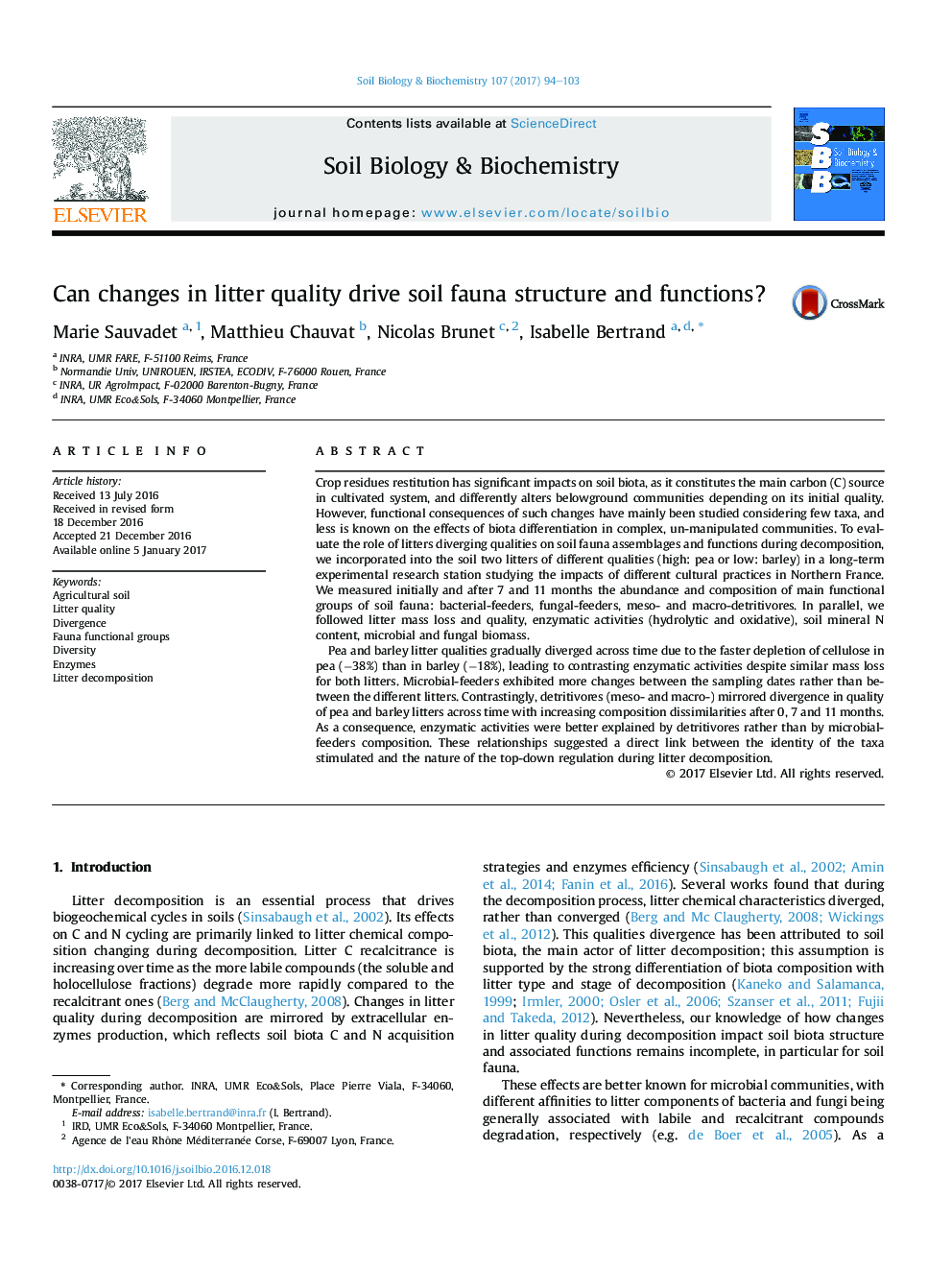| Article ID | Journal | Published Year | Pages | File Type |
|---|---|---|---|---|
| 5516418 | Soil Biology and Biochemistry | 2017 | 10 Pages |
â¢Pea and barley litter qualities diverged during decomposition in an arable soil.â¢Composition of detritivores better reflected quality divergence than microbial-feeders.â¢Relationships between fauna structure and functions varied with litter identity.â¢Detritivores rather than microbial-feeders explained enzymes activities.
Crop residues restitution has significant impacts on soil biota, as it constitutes the main carbon (C) source in cultivated system, and differently alters belowground communities depending on its initial quality. However, functional consequences of such changes have mainly been studied considering few taxa, and less is known on the effects of biota differentiation in complex, un-manipulated communities. To evaluate the role of litters diverging qualities on soil fauna assemblages and functions during decomposition, we incorporated into the soil two litters of different qualities (high: pea or low: barley) in a long-term experimental research station studying the impacts of different cultural practices in Northern France. We measured initially and after 7 and 11 months the abundance and composition of main functional groups of soil fauna: bacterial-feeders, fungal-feeders, meso- and macro-detritivores. In parallel, we followed litter mass loss and quality, enzymatic activities (hydrolytic and oxidative), soil mineral N content, microbial and fungal biomass.Pea and barley litter qualities gradually diverged across time due to the faster depletion of cellulose in pea (â38%) than in barley (â18%), leading to contrasting enzymatic activities despite similar mass loss for both litters. Microbial-feeders exhibited more changes between the sampling dates rather than between the different litters. Contrastingly, detritivores (meso- and macro-) mirrored divergence in quality of pea and barley litters across time with increasing composition dissimilarities after 0, 7 and 11 months. As a consequence, enzymatic activities were better explained by detritivores rather than by microbial-feeders composition. These relationships suggested a direct link between the identity of the taxa stimulated and the nature of the top-down regulation during litter decomposition.
